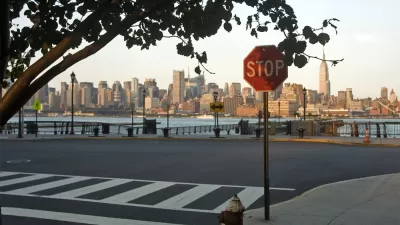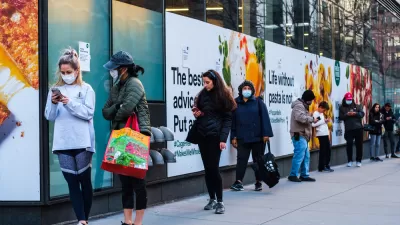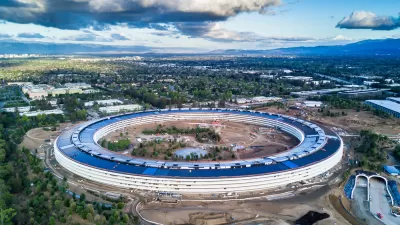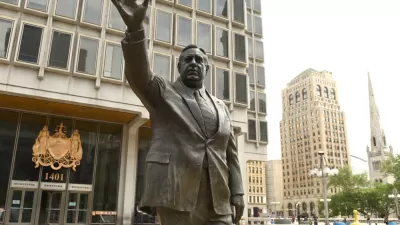Response to coronavirus challenges in urban settings will likely be a continuity of work started decades ago.

Widespread fears about the impact of the coronavirus pandemic on privacy and densification paint a picture of a frightening urban future. Contrarily, Ian Klaus shows a hopeful "radical vision of hope: As lifestyle and consumption habits have transformed overnight and governments have committed trillions of dollars of investment in national economies, perhaps the challenges of overcoming the coronavirus pandemic might ultimately foster a more equitable, sustainable urban future."
Klaus outlines five ongoing developments that could shape the cities post-pandemic:
- Affordable housing and accessible design will be celebrated as architects and urban designers continue to present innovative solutions to social issues around housing.
- The development of new building materials (think ultra-strong timber towers and biophilic design) promotes sustainability.
- Local leaders realizing the power to respond to challenges in transportation and housing.
- Networks of cities participating in collective action will continue to organize, elevating urban concerns to the global stage.
- Increased attention is paid to cities in the Global South. The resiliency of informal housing will inform future adaptation.
Studying the successes of recent history offers opportunities to identify the work that must continue and that will define wins in the future. Looking toward the challenges faced by urbanists in the post-coronavirus future Klaus adds, "We all already know much of what we will find and have to work with on the other side."
FULL STORY: The Post-Pandemic Urban Future Is Already Here

Planetizen Federal Action Tracker
A weekly monitor of how Trump’s orders and actions are impacting planners and planning in America.

Congressman Proposes Bill to Rename DC Metro “Trump Train”
The Make Autorail Great Again Act would withhold federal funding to the system until the Washington Metropolitan Area Transit Authority (WMATA), rebrands as the Washington Metropolitan Authority for Greater Access (WMAGA).

The Simple Legislative Tool Transforming Vacant Downtowns
In California, Michigan and Georgia, an easy win is bringing dollars — and delight — back to city centers.

The States Losing Rural Delivery Rooms at an Alarming Pace
In some states, as few as 9% of rural hospitals still deliver babies. As a result, rising pre-term births, no adequate pre-term care and harrowing close calls are a growing reality.

The Small South Asian Republic Going all in on EVs
Thanks to one simple policy change less than five years ago, 65% of new cars in this Himalayan country are now electric.

DC Backpedals on Bike Lane Protection, Swaps Barriers for Paint
Citing aesthetic concerns, the city is removing the concrete barriers and flexposts that once separated Arizona Avenue cyclists from motor vehicles.
Urban Design for Planners 1: Software Tools
This six-course series explores essential urban design concepts using open source software and equips planners with the tools they need to participate fully in the urban design process.
Planning for Universal Design
Learn the tools for implementing Universal Design in planning regulations.
Smith Gee Studio
City of Charlotte
City of Camden Redevelopment Agency
City of Astoria
Transportation Research & Education Center (TREC) at Portland State University
US High Speed Rail Association
City of Camden Redevelopment Agency
Municipality of Princeton (NJ)





























